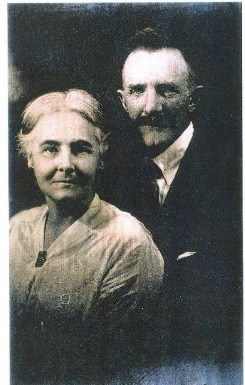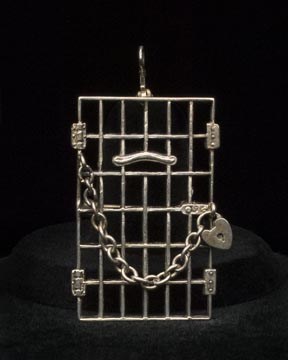The women’s suffrage movement (to give women the right to vote) was spearheaded by now famous suffragettes such as Elizabeth Cady Stanton and Susan B. Anthony. However, they weren’t the only ones who fought for women’s equal rights-a local woman who stood out was Louise Parker Mayo (1868 – 1952). Louise was a former teacher, farmer’s wife and mother of seven children- two daughters and five sons. She also drove “the barge” a horse-drawn wagon that took children to school.

Many women in Framingham joined the Framingham Equal Suffrage League but Louise was very active. In 1916, she went to Washington with a group of women to picket the White House, carrying signs that read “Liberty, Equality, and Fraternity”. They were quickly arrested and sentenced to 60 days in jail.
The suffragettes traveled by train and arrived at the prison’s work house by 6 o’clock in time for a shower and to dress for dinner. After their shower the prison suits were donned. A gray-colored, one piece dress cut to fit the average female figure. Plain blue cotton stockings were also worn. No jewelry of any kind was allowed.
The women worked alongside the other prisoners with the matron supervising. More than likely they were assigned to the sewing room where they sewed clothes for the prisoners. They may have had to work in the garden and do similar tasks.
Sundays there was no work and the prisoners could gather around a piano in the common room and sing. The ladies couldn’t receive visitors but could write letters subject to jail censorship.
The women served two days before a pardon came from President Wilson. This incident caused national attention and moved us closer to gaining voting rights for women and the creation of the 19th amendment, which was added to the constitution in 1920.

The National Woman’s Party recognized Louise Mayo’s sacrifice and awarded her and others with a pin in the shape of a jailhouse door. Louise’s pin can be seen at the Framingham History Center.
Further Reading
Carson, Mary Kay, Why couldn’t Susan B. Anthony vote? and other questions about…women’s suffrage, Sterling Children’s Books, 2015.
Colman, Penny, Elizabeth Cady Stanton and Susan B. Anthony, Henry Holt and Company, LLC, :Dumbeck, Kristina, Leaders of women’s suffrage, Lucent Books, 2001.
Halmer, Diana Star, Women’s Suffrage, Facts On File, Inc., 1998.
Hill, Jeff, Defining Moments Women’s Suffrage, Omnigraphics, Inc., 2006.
Sagan, Miriam, Women’s Suffrage, Lucent Books, Inc., 1954.
Framingham Tercentennial Commission, 2000.
Herring, Stephen, Top Ten Remarkable Women From Framingham History,” Framingham Historical Society, 2000.
“Sixteen Militants Begin 60-day Term.” Washington Post, 18 July 1917.
Bibliography
Danker, Anita C. “Grassroots Suffragists: Josephine Collins and Louise Mayo, a study in contrasts.” New England Journal of History, vol. 67, no. 2, Spring 2011, pp.54-72.
Dewar, Martha E., and M. Joan Gilbert, Framingham Historical Reflections, Town of Framingham Massachusetts, 1974.
Herring, Stephen, Framingham: An American Town, Framingham Historical Society. http://suffragistmrsrobertwalker.org/sample-page/sixteen-militants-begin-60-day-term
“Suffrage in Framingham.” Framingham History Center. http://www.framinghamhistory.org/resources . Accessed 06 June 2017.